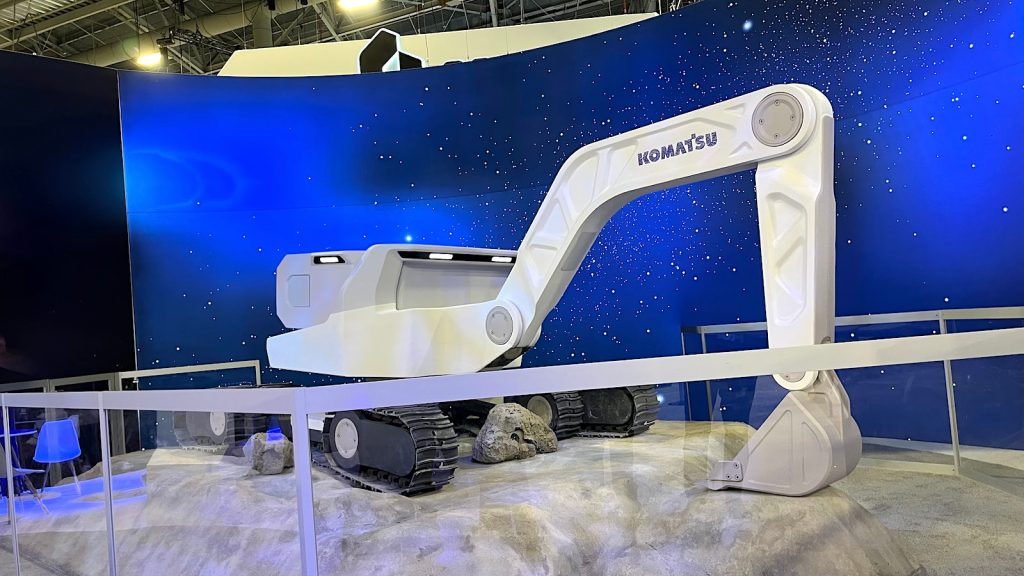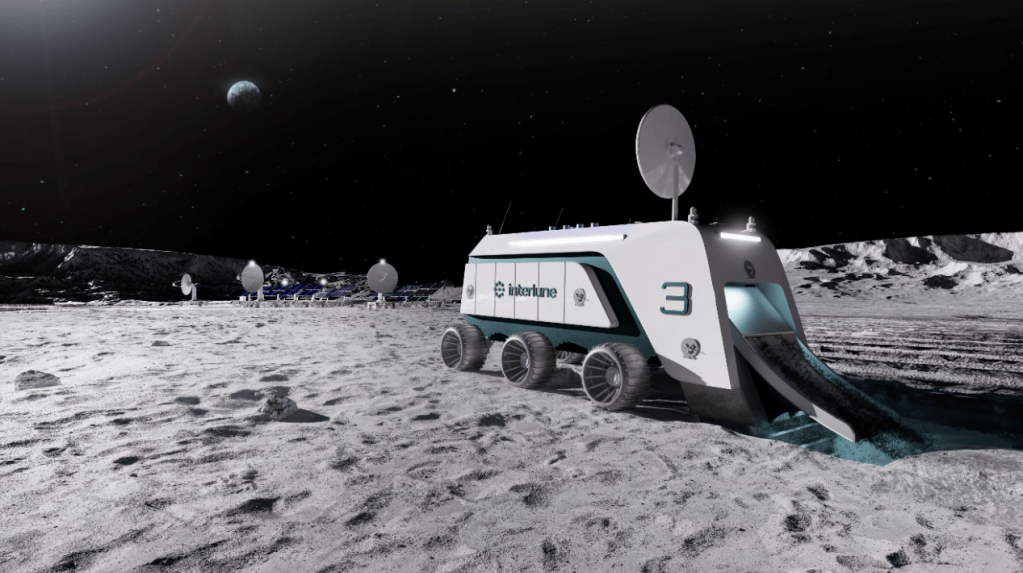
International equipment manufacturer Vermeer has unveiled a full-scale prototype of its Interlune excavator, a machine designed to ingest 100 metric tons of rocks and dirt per hour, extracting valuable helium as it makes its way across the surface … of the Moon.
Helium plays a critical role in the manufacturing of semiconductors, chips, optics, and all the other stuff that makes EVs, autonomy, the Internet, and the rest of twenty-first century life possible. The problem is that, despite being the second-most common element in the universe, helium is pretty rare on Earth – and we are rapidly running out. As such, there are intense economic and political pressures to find new and reliable sources of helium somewhere, anywhere else, and that demand has sparked a new modern space race focused on harvesting helium on the Moon and getting it back home.
To that end, companies like American lunar mining startup Interlune and the Iowa-based equipment experts at Vermeer are partnering on the development of suite of interplanetary equipment assets capable of digging up lunar materials like rocks and sand from up to three meters below the surface, extract helium-3 (a light, stable isotope of helium believed to exist in abundance on the Moon), then package it, contain it, and ship it back to Earth.
“When you’re operating equipment on the Moon, reliability and performance standards are at a new level,” says Rob Meyerson, Interlune CEO. “Vermeer has a legacy of innovation and excellence that started more than 75 years ago, which makes them the ideal partner for Interlune.”
Enter: Japan

America isn’t the only spacefaring nation eyeing a helium mine on the Moon. Japan announced similar plans back in 2023, with Japanese construction giant Komatsu announcing plans to develop a fully electric excavator capable of operating on the lunar surface.
The company showed a scaled prototype of the machine at the 2025 Consumer Electronics Show (CES) in Las Vegas (above), emphasizing the need to develop new ways to operate equipment assets in the extreme temperatures of extraplanetary environments beyond diesel or even hydrogen combustion.
On the airless surface of the moon, it would be impossible for an internal combustion engine to operate on the moon’s surface because there is no oxygen for combustion. Electrically powered machines seem the obvious solution with solar power generation supplying the electricity. But the answer is not that simple.
Temperature changes on the surface of the moon are extreme. They can soar to 110° C and plummet to -170° C. Developing electric construction machinery to perform in this environment is no easy task, but Komatsu is tackling issues one by one as they appear. Using thermal control and other electrification technologies, we are engineering solutions.
Despite Komatsu’s apparent head start, however, Vermeer seem to pulled ahead – not just in terms of machine development, but in terms of extraction potential as well.
“The high-rate excavation needed to harvest helium-3 from the Moon in large quantities has never been attempted before, let alone with high efficiency,” said Gary Lai, Interlune co-founder and CTO. “Vermeer’s response to such an ambitious assignment was to move fast. We’ve been very pleased with the results of the test program to date and look forward to the next phase of development.”
Interlune is funded by grants from the US Department of Energy and NASA TechFlights. In 2023, the company received a National Science Foundation (NSF) Small Business Innovation Research award to develop the technology to size and sort lunar regolith (read: dirt). Interlune has raised $18 million in funding so far, and is planning its first mission to the Moon before 2030.
Electrek’s Take

We’ve got space travel, weird mineral extraction from another planet that’s essential for our technology, and a rapid, unchecked proliferation of AI. All we need now is big worms, a whole bunch of hallucinogenic narcotics, and the will to smash up a bunch of data centers with baseball bats – then we’ll have a pretty decent Dune LARP going. Yee-ha!
SOURCE | IMAGES: Interlune.

Your personalized solar quotes are easy to compare online and you’ll get access to unbiased Energy Advisors to help you every step of the way. The best part? No one will call you until after you’ve elected to move forward. Get started, hassle-free, by clicking here.
FTC: We use income earning auto affiliate links. More.

Comments